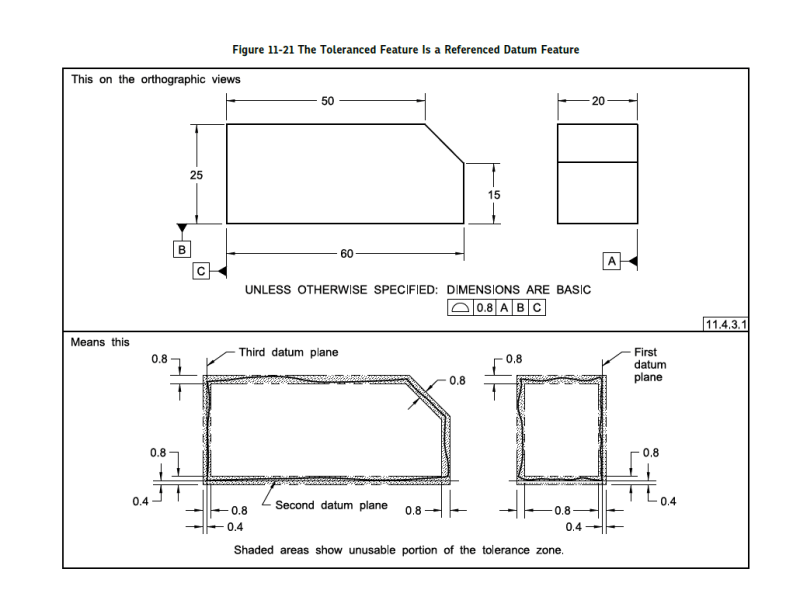I have a feeling this is a basic question, but I have always wondered it. A profile tolerance zone boundary looks exactly like the surface, just offset by the value, but what happens at the extents of the boundary? does the boundary stretch and contract to match the actual part? if a part is too long and goes beyond the extents of the nominal boundary, is in or out of tolerance?
My work computer is not letting me upload an image here. So picture this...you have a simple cube with three of the faces as datums A,B,C. one of the faces that is perpendicular to A is controlled by a profile to ABC. The face that is opposite Datum A is controlled with a parallelism to A (not sure this matters but I thought I'd mention it). Is the location of the face parallel to A controlled? or do I need a size dimension on the overall width of my block?
Any reference to where in the standard this concept is outlined would be helpful.
thanks
My work computer is not letting me upload an image here. So picture this...you have a simple cube with three of the faces as datums A,B,C. one of the faces that is perpendicular to A is controlled by a profile to ABC. The face that is opposite Datum A is controlled with a parallelism to A (not sure this matters but I thought I'd mention it). Is the location of the face parallel to A controlled? or do I need a size dimension on the overall width of my block?
Any reference to where in the standard this concept is outlined would be helpful.
thanks

